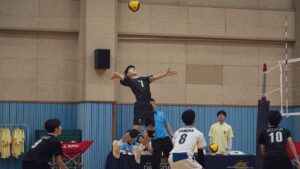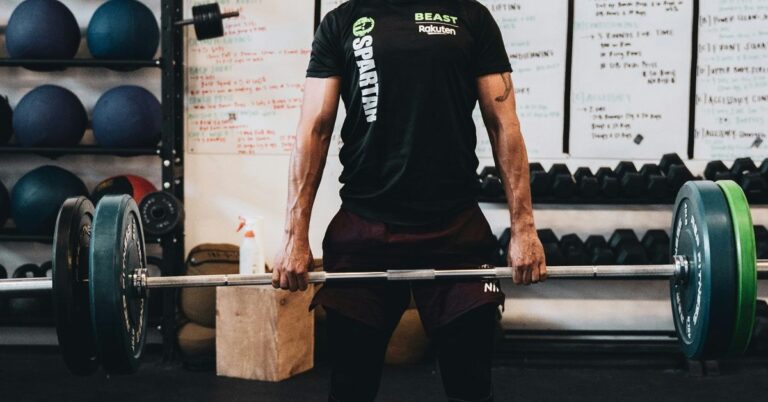Elevate Your Game: The Secret Conditioning Techniques Used by Top Athletes Revealed!
In the world of sports, the difference between being good and being great often comes down to one crucial aspect: conditioning. While most of us are aware that top athletes spend hours honing their craft, what really sets them apart are the secret techniques they use to push their bodies to the limit. It’s not just about lifting weights or running laps; it’s a complex mix of science, strategy, and sometimes, a dash of sheer willpower. Let’s dive into the conditioning techniques that these elite athletes swear by, and perhaps discover a few secrets that could help elevate your own game.
Understanding the Foundation of Athletic Conditioning
Before we delve into the specifics, it’s essential to understand the foundation of athletic conditioning. At its core, conditioning is about preparing the body to perform at its best, regardless of the sport. This involves enhancing strength, speed, endurance, flexibility, and recovery. Yet, it’s not a one-size-fits-all approach. Every athlete has unique needs, depending on their sport and personal goals.
I remember a conversation with a former Olympic sprinter who emphasized that conditioning isn’t just about physical strength; it’s as much about mental toughness. “You can have a strong body,” he said, “but if your mind isn’t ready to push through the pain, you’ll never reach your peak.” It struck me then that conditioning encompasses not just the physical aspects of training, but also the psychological resilience required to endure.
The Role of Functional Training
One of the most effective conditioning techniques employed by top athletes is functional training. This type of training focuses on movements that mimic real-life activities or specific sports actions. It’s about improving performance in the field rather than just bulking up muscles.
Think about a basketball player—functional training might include exercises that simulate jumping, sprinting, and rapid directional changes. For example, box jumps, agility ladders, and medicine ball throws are common components of their regimen. These exercises not only build strength but also enhance coordination and balance, essential for peak performance during a game.
As one strength and conditioning coach put it, “It’s not about how much you can lift; it’s about how well you can move.” This philosophy resonates through the training halls of many professional teams, where athletes are often seen climbing ropes, balancing on stability balls, or engaging in dynamic stretching routines.
Incorporating Plyometrics for Explosiveness
If you’ve ever watched a track and field event, you’ve seen the explosive power of top athletes. Plyometrics are a secret weapon in their conditioning arsenal. This form of training involves explosive movements designed to enhance power and speed. Think of it as a way to teach your muscles to exert maximum force in the shortest possible time.
Exercises like squat jumps, burpees, and bounding are staples in a plyometric regimen. They condition the fast-twitch muscle fibers responsible for rapid movements. I’ve seen athletes incorporate these exercises into their routines, often gasping for breath after just a few sets, but the results are undeniable. They lead to faster sprints, higher jumps, and overall improved athletic performance.
The Importance of Recovery Techniques
Now, let’s take a step back. It’s easy to think that more training equals better performance, but recovery is just as crucial. Many elite athletes attribute their success not just to their training intensity, but to how well they recover. Neglecting recovery can lead to overtraining and injuries, which can set an athlete back significantly.
Here’s where some secret techniques come into play. From ice baths to compression therapy, the methods used for recovery are as varied as the athletes themselves. For instance, you might find a football player lounging in an ice bath after a grueling practice, while a swimmer may prefer to use a foam roller or engage in yoga to stretch out tight muscles.
One fascinating approach I learned about involves the use of breathwork. Athletes are increasingly utilizing controlled breathing techniques to accelerate recovery and decrease muscle soreness. This is a reminder that sometimes, the simplest techniques can yield profound results. (I mean, who would have thought that just breathing could be so beneficial?)
Nutrition: Fueling the Body
Nutritional strategies are another realm where top athletes excel, often employing sophisticated meal plans to enhance their conditioning. The age-old adage “you are what you eat” rings especially true in the world of sports. Proper nutrition fuels the body, aids recovery, and can even enhance performance.
High-performance athletes often work with nutritionists to tailor their diets. This may include high-protein meals to support muscle recovery, complex carbohydrates for energy, and healthy fats for overall health. I remember reading about a professional cyclist who swore by his ritual of consuming a smoothie packed with spinach, banana, and protein powder before every big race. His reasoning? “It’s not just about feeling good; it’s about optimizing every aspect of my body.”
The Power of Mental Conditioning
Another often-overlooked aspect of conditioning is mental training. In an era where sports psychology is gaining traction, athletes are focusing on mental conditioning to enhance performance. Visualization techniques, mindfulness, and mental resilience exercises can make a significant difference.
Take the example of a world-renowned tennis player who spends time visualizing her matches before stepping onto the court. She believes that picturing herself executing the perfect serve allows her to perform under pressure. “It’s like a rehearsal for the mind,” she explained during an interview. This technique isn’t just for the elite; anyone can incorporate mental conditioning into their training regimen.
Cross-Training: Building Versatility
Cross-training is another buzzword that has made its way into the training regimens of many top athletes. This technique involves participating in different sports or activities to enhance overall athletic performance. It’s a fantastic way to build versatility while reducing the risk of overuse injuries.
For instance, a professional soccer player might incorporate swimming into their training routine. Swimming provides a low-impact workout that builds endurance while allowing the player to recover from the high-impact nature of soccer. I once spoke with a triathlete who emphasized the importance of cross-training: “It keeps things fresh, and you never know when a new skill might come in handy during a race.”
Advanced Technology in Conditioning
As technology continues to evolve, so do the techniques used by athletes to condition their bodies. Wearable technology, such as heart rate monitors and fitness trackers, has become commonplace. These devices provide real-time feedback and insights into an athlete’s performance, allowing them to optimize their training sessions.
Moreover, recovery technology has also seen a significant boost. The use of cryotherapy, infrared saunas, and even specialized recovery boots is on the rise. I was taken aback when I first witnessed an NBA team using virtual reality to simulate game scenarios for conditioning. It’s astounding how far we’ve come! (I can only imagine how much more advanced things will be in a decade.)
The Role of Coaches and Mentorship
Behind every successful athlete is often a dedicated coach or mentor, guiding their conditioning journey. Coaches bring a wealth of experience and knowledge, helping athletes tailor their training to maximize results. They often act as a sounding board, offering insights and motivation when it’s needed most.
One former athlete I spoke with credits his coach for not only improving his physical game but also for teaching him the mental aspects of competition. “My coach always said, ‘Train harder than your competition, but also think smarter.’ That stuck with me through my career.”
Real-World Examples: Secrets from the Pros
Let’s take a look at some real-world examples of athletes and the unique conditioning techniques that have propelled them to the top of their game.
- LeBron James: Known for his incredible versatility, LeBron incorporates yoga and pilates into his routine, focusing on flexibility and core strength. His commitment to recovery, including regular massages and cryotherapy, ensures he stays in peak condition.
- Serena Williams: Serena’s conditioning often includes resistance training and agility drills to maintain her explosive power on the court. She emphasizes the importance of mental conditioning, utilizing visualization techniques before matches.
- Usain Bolt: The fastest man on the planet has a diverse training regimen that includes plyometrics and sprint drills. He also places great emphasis on rest and recovery, ensuring his body is primed for peak performance.
- Tom Brady: The NFL legend is known for his strict diet and unique conditioning techniques, including flexibility routines and innovative recovery methods. His commitment to hydration and nutrition is legendary among athletes.
Tips for Implementing These Techniques in Your Own Training
So, how can you take a page from the playbook of these top athletes? Here are some practical tips for incorporating these conditioning techniques into your own training routine:
- Start with Functional Training: Focus on exercises that mimic your sport. Incorporate movements that enhance your strength, agility, and balance.
- Include Plyometrics: Add explosive movements to your workout to increase power and speed. Just be sure to start gradually to avoid injury!
- Prioritize Recovery: Don’t underestimate the importance of rest. Schedule recovery days and explore techniques like foam rolling or yoga.
- Eat Smart: Fuel your body with nutritious foods. Consider consulting a nutritionist to develop a meal plan tailored to your needs.
- Work on Mental Conditioning: Practice visualization and mindfulness techniques to enhance your focus and resilience.
- Explore Cross-Training: Engage in different sports to build versatility and reduce the risk of overuse injuries.
- Embrace Technology: Use wearable fitness trackers to monitor your progress and adjust your training as needed.
Final Thoughts: The Journey of Conditioning
As we’ve explored, conditioning is a multifaceted journey that requires dedication, strategy, and a willingness to adapt. The techniques used by top athletes may seem daunting, but incorporating even a few can significantly elevate your game. Whether you’re a weekend warrior or an aspiring professional, remember that the path to peak performance is as much about the journey as it is about the destination.
In the end, it’s about finding what works for you, sticking to it, and, above all, enjoying the process. After all, sports should be fun—just like I had fun writing this article! Now, go out there and elevate your game!













